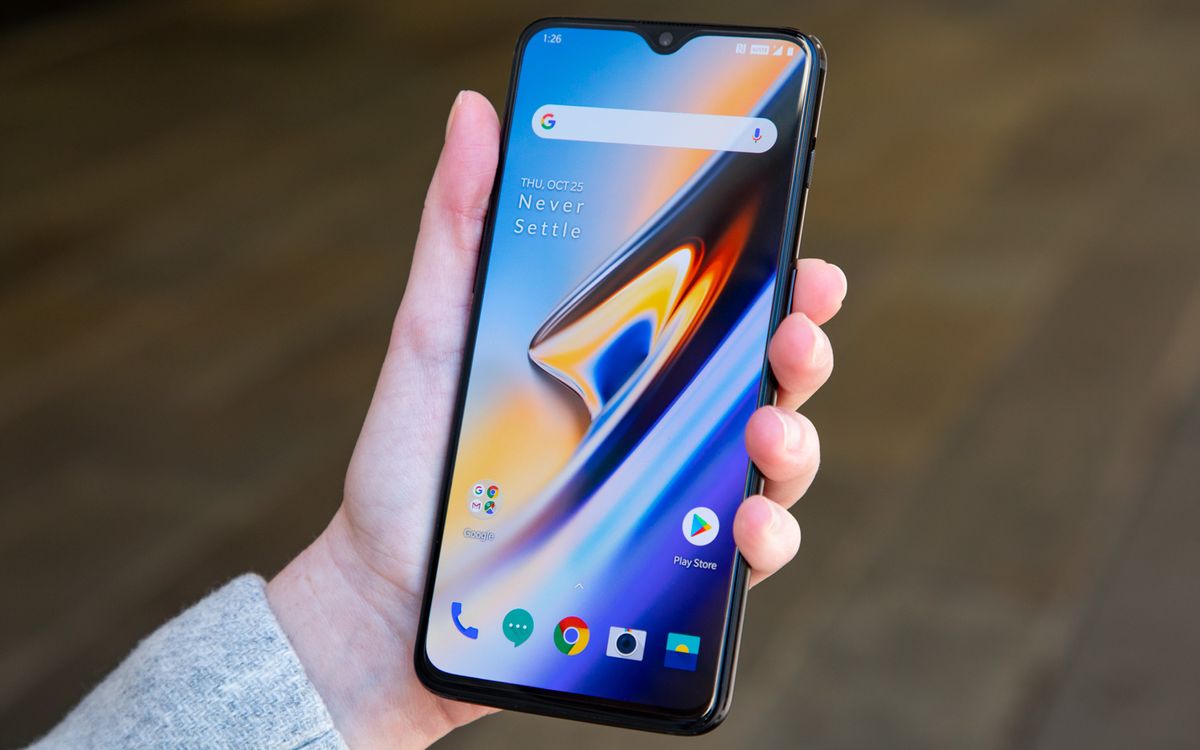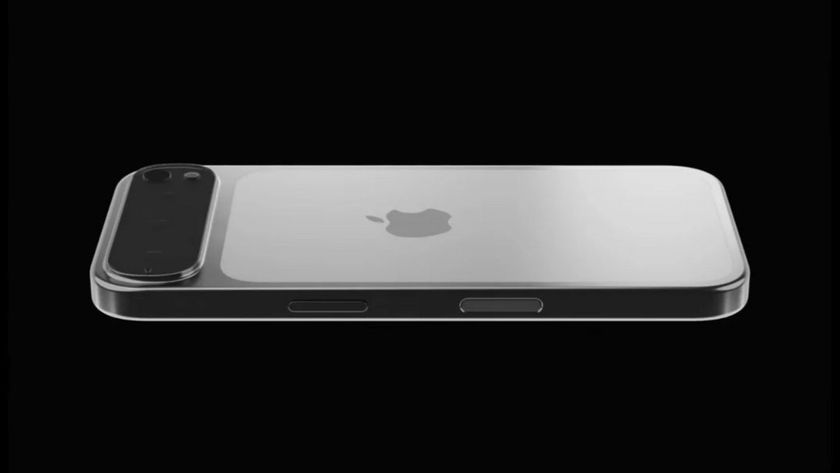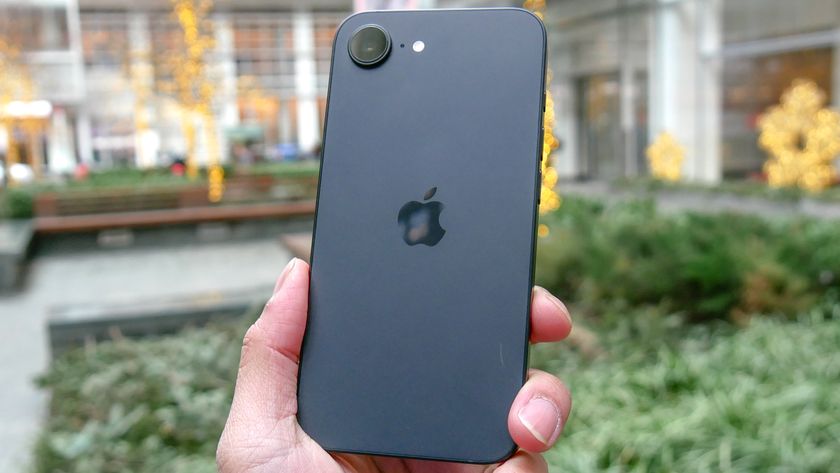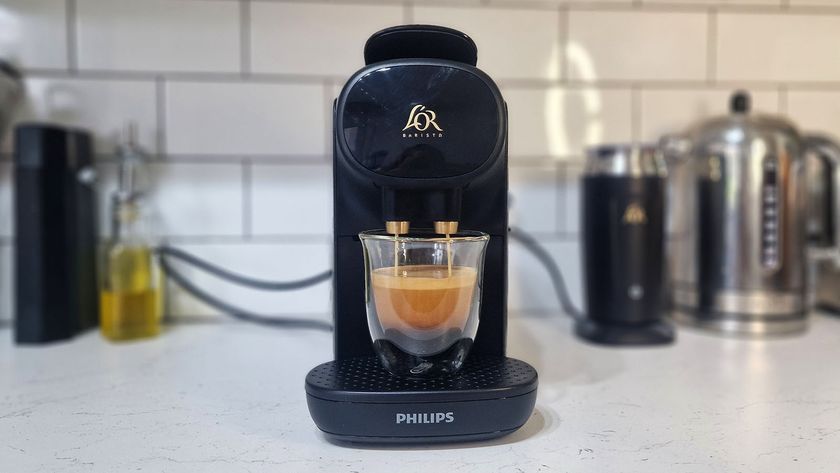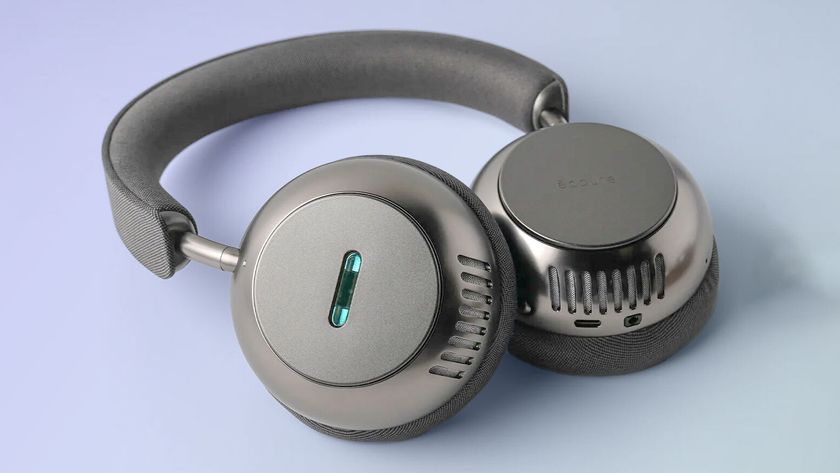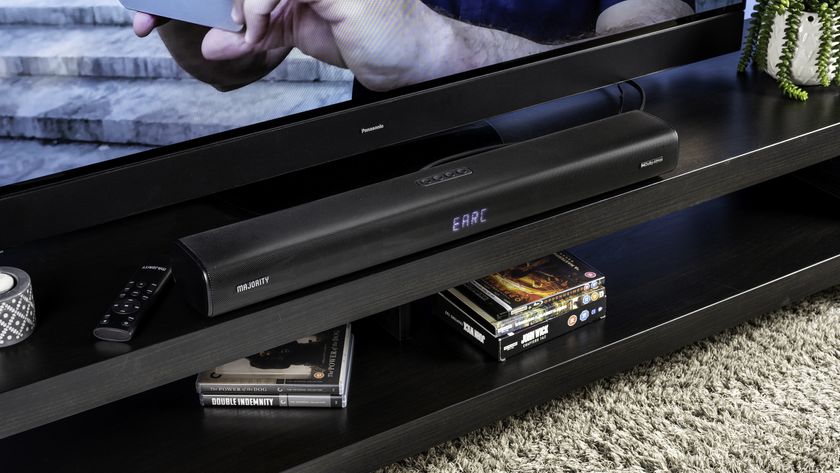Tom's Guide Verdict
This affordable Android flagship sports a lightning-fast in-display fingerprint sensor and powerful performance for half the price of its rivals.
Pros
- +
Super-fast in-display fingerprint sensor
- +
Gorgeous display with tiny teardrop notch
- +
Improved camera
- +
T-Mobile support
- +
Android Pie out of the box
Cons
- -
No headphone jack
- -
Lacks wireless charging
Why you can trust Tom's Guide
After years of releasing affordable, stylish Android phones, OnePlus is now pushing boundaries with the OnePlus 6T, the first smartphone to sport an in-display fingerprint sensor in the U.S. The OnePlus 6T's magical sensor works like a charm and makes us wish other smartphones would add this option in addition to facial recognition.
But the 6T also doubles down on value: the base storage increases from 64GB to 128GB on this version, while the price ticks up just $20 from the OnePlus 6. The $549 entry-level 6T remains about half the price of other flagship phones with edge-to-edge displays and cutting-edge specs, and you don't even have to sacrifice great photos or solid battery life to save all that money.
And a new carrier partnership with T-Mobile widens the availability of the 6T, which will make OnePlus more competitive with the likes of Google, Samsung and even Apple. This is one of the best smartphones with few downsides. Also, be sure to check out our face-off between the OnePlus 6T and Galaxy S10, and between the OnePlus 6T and the newer OnePlus Nord.
Editor's note, June 11: The OnePlus 7 Pro is now on sale, which means you can snag a OnePlus 6T with more storage for $30 less. But the 7 Pro is worth the extra money — check out our full review to find out why.
OnePlus 6T Cheat Sheet: What You Need to Know
- The 6T is the first flagship phone released in the U.S. with an in-display fingerprint sensor. Spoiler alert: The sensor's lightning fast and amazing.
- T-Mobile customers can buy the 6T in-store, and it also supports Verizon's network.
- Farewell, headphone jack. OnePlus has parted ways with the 3.5mm port. A USB-C dongle is included in the box.
- Android 9.0 Pie with OyxgenOS doesn't feel bloated.
- New Night photography feature aims to improve low-light shots, but the Pixel 3 is better.
- A recently-released McLaren Edition offers 10GB of RAM, 256GB of storage and OnePlus' new Warp Charge system.
OnePlus 6T Price and Availability
For the first time, OnePlus is offering its latest flagship through a U.S. carrier, T-Mobile, which will introduce the company's phones to a wider audience.
T-Mobile began selling the OnePlus 6T online and in stores Nov. 1. The carrier offers only one variant of the device, the Mirror Black version with 8GB of RAM and 128GB of storage for $579. T-Mobile is offering a trade-in deal for the 6T, with up to 30 eligible devices giving you $300 toward the cost of the new phone.
On OnePlus's website, you can also find a Midnight Black model in three varieties: A $549 version with 6GB of RAM and 128GB of storage (£499, €549), the aforementioned $579 version (£529, €579) and a beastly $629 6T (£579, €629) with 8GB of RAM and 256GB of storage. The T-Mobile version will be locked to that carrier's network until it's paid off, but the 6T will be available to buy unlocked and supported on Verizon and AT&T in the U.S.
OnePlus previously offered a Thunder Purple variant of the 6T, though that model has since sold out. It has moved on to a McLaren-branded limited edition variant that carries a special carbon fiber and Papaya Orange design, 10GB of RAM, 256GB of storage and OnePlus' new Warp Charging system. It costs $699 (£649) and is sold exclusively through the phone maker's website.
The OnePlus 6 is now sold out on the company's website, but is still available on Amazon. The 6 is $50 less than the 6T, but it doesn't have an in-display fingerprint sensor and isn't available to buy through a carrier.
Design: Matte beauty with teardrop notch
OnePlus isn't pushing any design boundaries with the 6T, which isn't necessarily a bad thing. The matte Midnight Black model I tested is a subtle standout in a sea of glassy black 6-inch slabs (i.e., almost every other Android flagship). The glossy Mirror Black shade is more run-of-the-mill. Unfortunately, OnePlus isn't releasing a Silk White variant of the 6T, at least not yet. The pearly finish of that OnePlus 6 model was one-of-a-kind. The Mirror and Midnight Black hues are standard for OnePlus, so it would be nice to see a fresh shade for the 6T.
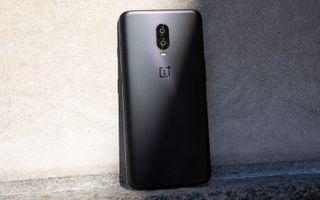
OnePlus has slightly refined its go-to aesthetic for the 6T with tweaks like a teardrop-shaped notch, which is significantly smaller than the iPhone X-style notch at the top of the OnePlus 6's display. The 6T's bottom bezel is also a smidge thinner than its predecessor's. But the overall dimensions have remained largely the same over the years, even as display size has increased and the fingerprint sensor has moved from chin to back to beneath the display.
And even though OnePlus has embraced glass with the 6T and ditched the headphone jack (yes, it's true), the company has still shied away from supporting wireless charging.
Display: Still stunning
The OnePlus 6T’s display quality easily rivals flagships twice its price. The expansive, 6.4-inch AMOLED (2340 x 1080) panel is slightly taller than the OnePlus 6's screen, but the most noticeable difference is the less obtrusive dewdrop notch. OnePlus slimmed down the camera cut-out from the 6's iPhone X replica to one that resembles the short-lived Essential Phone. The design tweak makes the screen feel truly edge-to-edge in a way that notched flagships don't.
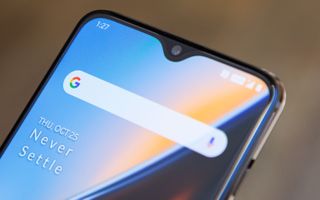
The OnePlus 6T's display isn't quite as rich and bright as the Samsung Galaxy Note 9 or the iPhone XS Max, but those phones will cost you $1,000. The 6T's panel is comparable to the Pixel 3's, which costs $200 or so more than the 6T, in brightness and color accuracy. The 6T hit 405 nits on our light meter, beating the 401-nit max hit by the Pixel 3, and covers 222.6 percent of the sRGB color gamut to the Pixel's 202 percent range. The 6T's screen is also more true-to-life, with a Delta-E rating of 0.36, compared with the Pixel’s 0.44. (Numbers closer to zero are better.)
The OnePlus 6T's expansive 6.4-inch OLED display quality easily rivals flagships twice its price.
Watching the trailer for Fantastic Beasts 2: The Crimes of Grindelwald, where there are dark, dramatic scenes layered with shades of black and streaked with brilliant blue flames, I noticed the 6T's display was dimmer than other OLED panels, such as the Galaxy Note 9 and the iPhone XS Max. But again, for the price, the 6T's display is very good, and the tear-shaped notch almost fades away when immersed in a video.
OnePlus 6T Specs
| Price | $549 (6GB/128GB), $579 (8GB/128GB), $629 (8GB/256GB) |
| OS | Android 9.0 Pie with OxygenOS |
| CPU | Snapdragon 845 |
| RAM | 6GB, 8GB |
| Storage | 128GB, 256GB |
| Display | 6.4-inch AMOLED (2340 x 1080) |
| Rear Camera | 16-MP (f/1.7), 20-MP (f/1.7) |
| Front Camera | 16-MP (f/2.0) |
| Colors | Mirror Black, Midnight Black |
| Battery Size | 3,700 mAh |
| Size | 6.2 x 2.94 x 0.32 inches |
| Weight | 6.52 ounces |
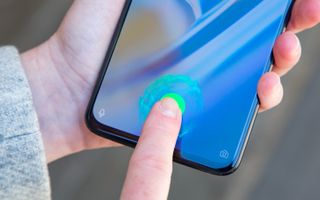
The 6T's display lights up with a fingerprint indicator so you're not blindly jabbing at the screen to unlock the device. Simply press lightly on the indicator and the phone will snap open to the home screen. This happens almost instantly — in 0.34 seconds, OnePlus says. (It definitely felt that fast to me.)
OnePlus isn't the first phone maker to put a fingerprint sensor in the display, but this one is less finicky and works instantly.
The sensor isn't perfect, but they never are, not even the Touch ID sensors on older iPhones. Occasionally, the 6T's display didn't recognize my fingerprint, usually when I pressed too quickly or didn't stick the landing. A second try always did the trick.
MORE: 15 Best Mobile Privacy and Security Apps
This is the future of smartphone technology — at least until facial scanning becomes more advanced. The 6T's in-display sensor can authenticate Google Pay transactions; the device's facial recognition cannot, because it's less secure than the fingerprint. Unlike newer iPhones, which have a TrueDepth front-facing camera to thoroughly map your face, the OnePlus 6T's camera takes a quick, 2D scan. It's not foolproof.
Camera: Improved, but not amazing
OnePlus didn't make any tweaks to the camera hardware in the 6T. Like the 6, the new model sports a dual-lens rear shooter with a 16-megapixel and 20-MP lens and a 20-MP front-facing lens.
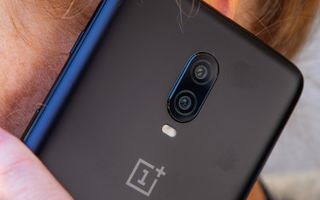
But the company made some software enhancements to boost photo quality, particularly in portraits and at night. A new Night mode, which you can select from the lower menu in the camera preview, lengthens the exposure time to capture more detail in low-light settings.
Unfortunately, that exposure doesn't do much to enhance the quality of a low-light image, as you can see in the below comparison of the same spooky Halloween display lit colorful lights and a street lamp. With Night mode activated, the shot is brighter overall but also looks overexposed, so you lose detail and contrast. The image isn't much better without Night mode, but looks slightly less grainy.
The Pixel 3 captures the variation in the purple lights, and also brings up the contrast in the black spiders on the staircase. The red of the monstrous ghost's eyes and hands is far more vivid in the Pixel 3's shot. This is without the Pixel 3's forthcoming Night Sight mode, which reportedly makes the device's low-light shots dramatically better. The iPhone XR’s shot is more true-to-life — the purple and red hues look like they did in person, even if there's not as much contrast as in the Pixel 3's result.

In a challenging setup with purple lights reflected against a house in a different Halloween display, the 6T's Night mode fared better, but still looked dull and unsaturated overall. The Pixel 3, for comparison, oversaturated the purple light and made it look blue. The iPhone XR's shot was again the most true-to-life — the purple and orange lights looked as they did in reality.
Capturing a photo in Night mode on the 6T takes several seconds to process, and you have to stay still the entire time. Unless you have a lot of time to spend shooting, Night mode isn't all that useful.
In daytime, I used the 6T's optical zoom and the Pixel 3's Super Res Zoom to capture a photo of the arch at Brooklyn’s Grand Army Plaza from a distance. This is where the Pixel 3's AI-assisted images become a matter of personal preference. The 6T's colors are more accurate — the arch, trees, green street lamps and bluish-gray early morning sky all look like they did when I snapped the image. The Pixel 3's shot is far moodier and dramatic, with more depth, thanks to the shadows deepened by the Pixel's software. But that's not how it actually looked, so points to the 6T for a more realistic photo.
OnePlus said it made improvements to the 6T's Portrait mode, but it didn't blow me away. In this shot of me taken from the same angle and distance on the 6T, Pixel 3 and iPhone XR, the 6T was overall too smooth — every detail from my hair to my skin to my hands looks like it's been airbrushed. The Pixel 3 struggled with the bokeh effect to the right of me; the leaves, black gate and half of the tree trunk behind me are still in focus. The XR nails both the colors of my skin and the flowers behind the gate, and also applies the bokeh evenly behind me.

The good news is that the 6T's camera software enhancements are rolling out to the OnePlus 6, so there's no urgent need to upgrade from OnePlus' previous phone unless you desperately want an in-display fingerprint reader and a smaller notch.
Performance: Flagship speed for less
The 6T shares the same specs as the 6, so performance is unchanged in the newer device. The phone's 8GB of RAM and Snapdragon 845 processor deliver flagship speeds, besting even Samsung's Galaxy Note 9 (with 6GB of RAM) and Google's Pixel 3 XL (4GB).
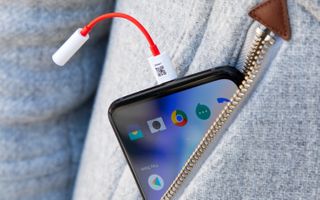
In the Geekbench 4 test of overall system performance, the 6T notched a score of 8,972, on a par with the 6's score of 9,098. The Note 9 clocked in at 8,876, while the Pixel 3 XL delivered a comparatively underwhelming score of 7,864. All Android flagships fall short of the new iPhones’ Geekbench scores, thanks to their A12 Bionic chip. But the 6T is easily best-in-class for hundreds of dollars less than its Android competitors.
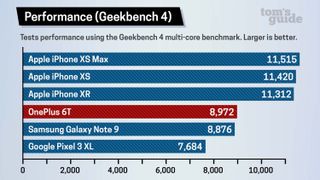
OnePlus says it made tweaks in the latest version of OxygenOS — about 500 tweaks, to be more precise — to make it even better. One of those features, Smart Boost, clears background apps that are used less often, no matter how recently you opened them. That app-management feature improves app launch speeds by up to 20 percent, the company said. This was noticeable in my testing. Cold-launching PUBG Mobile on the 6 and 6T side by side, both apps opened simultaneously, but the 6T loaded several seconds faster than its predecessor. OnePlus says this feature is limited to gaming apps, but even when I launched Netflix on both devices, I noticed the 6T loaded the welcome screen 6 seconds faster than the 6.
All apps launched quickly, including PUBG Mobile, and swiping between them with the 6T's Android Pie-based gesture controls was seamless. Not only does the 6T launch apps quickly, it's a gaming powerhouse. On 3DMark's Sling Shot Extreme Unlimited test of graphics performance, the $579 8GB version of the 6T scored 5,183 — far ahead of the Pixel 3 XL's score of 4,396 and the iPhone XR’s result, 4,416.
The new McLaren model of the 6T adds another 2GB of RAM for a total of 10GB. This means even more headroom to instantly launch apps from memory and juggle various tasks, though because the 6T isn't starved for RAM by any means, this change didn't make a difference in our performance benchmarking results.
MORE: Best Smartphones on the Market Now
Where the 6T fell short is in our real-world performance test, transcoding a 2-minute 4K video into 1080p in the Adobe Premiere app. Other flagships can crush this in less than 3 minutes, but the 6T (like the 6 before it) took 3:45 to accomplish the task.
We're at the point where all flagship smartphones are high-powered performers that can accomplish any task quickly. But those phones are all extremely expensive. Even the "budget" iPhone XR is $750. The fact that the 6T can easily compete on that playing field for less than $600 is impressive.
Software: An elegant twist on Android Pie
OnePlus has crafted its own take on Android, OxygenOS, which is a sophisticated vision of Google's operating system. The 6T ships with Android 9.0 Pie overlaid with the latest version of OxygenOS, so you can take advantage of the new gesture-based navigation, adaptive battery support and the aforementioned Smart Boost app-launching feature. The three-button navigation bar is turned on by default, but you can switch to the gesture-based navigation in Settings.

Google Lens is now part of the 6T's camera, which is a nice touch. OnePlus has shied away from baking in Google's services; Google Assistant isn't a high priority, for instance, the way it is so deeply entwined in the Pixel 3. If you want Assistant integration, the 6T isn't the best device.
Battery Life
The OnePlus 6T’s 3,700 mAh battery is slightly bigger than the OnePlus 6's 3,300 mAh pack, but the new device also has a slightly larger display. The two phones ran neck-and-neck in the Toms Guide Battery Test of continuous web-surfing over T-Mobile's LTE network, with the 6T lasting 10 hours and 23 minutes and the 6 lasting just 10 minutes longer. The smartphone average is 9:50.
In my five days of testing the 6T, I found it to be a champ. For instance, I charged up the 6T to 100 percent and then used it for 20 hours, from late afternoon to lunchtime the following day. I took the phone running, listening to the new Robyn album over Apple Music.
After streaming Dr. Strange on Netflix over T-Mobile's LTE network on a full charge, the 6T still had 77 percent life after 90 minutes.
I streamed YouTube videos. I took several rounds of photos. I paired running headphones to the phone and used its app to fine-tune the settings. I uploaded files to Dropbox. After all that, the 6T's battery was still chugging along at 50 percent.
MORE: OnePlus 6T McLaren Scorches Rivals In Charging Speed Test
In a video-streaming test, where I watched Dr. Strange on Netflix over T-Mobile's LTE network on a full charge, the 6T still had 77 percent life after 90 minutes.
Two flagship features the 6T is still missing are wireless charging and an IP rating. The device's all-glass body would make wireless charging possible, but the company is sticking with its Dash Charge technology for traditional charging over USB-C. Luckily, Dash Charge is incredibly fast, juicing up your OnePlus from 0 to 60 percent in 30 minutes.
The recently-unveiled McLaren Edition 6T ups the charging speed even further, through the use of OnePlus' new Warp Charge 30 protocol. This adapter is rated at 30W — 10W more than the standard Dash Charger that comes with other models of the phone. This makes the McLaren variant one of the fastest charging phones we've ever tested at Tom's Guide. In just 30 minutes, it went from empty to 66 percent. In an hour, it was at 98 percent. The Warp Charge system will not work with other 6T models, and OnePlus doesn't currently sell the adapter and cable combo alone.
OnePlus 6T vs. Pixel 3
The biggest rivals for the OnePlus 6T is Google's Pixel 3 ($799) and Pixel 3 XL ($899). The OnePlus 6T wins on value because it starts at $549, and you get more RAM than the Pixel 3 at 6GB versus 4GB. You also have the option for 8GB of RAM with the 6T. For the money, OnePlus gives you a bigger 6.4-inch display than either the Pixel 3 (5.5 inches) or Pixel 3 XL (6.3 inches).
However, based on our testing, the Pixel 3 and Pixel 3 XL offer superior cameras, routinely delivering better photo quality in almost all conditions versus the OnePlus 6T. And while the 6T comes with Android Pie out of the box, Google adds compelling AI features on top, such as Call Screening and Top Shot in the camera.
OnePlus 6T vs. iPhone XR
The OnePlus 6T is cheaper than the iPhone XR while offering a bigger display. The 6.2-inch-long 6T is taller than the 5.9-inch-long iPhone XR, Apple's most affordable flagship iPhone. That extra height is all display — the 6T's 6.4-inch OLED panel is simply bigger than the XR's 6.1-inch screen.
For those of us with small hands, the taller screen makes it tougher to navigate the 6T one-handed than the XR, but there are worthwhile trade-offs.
MORE: iPhone XR Review: The Best iPhone for the Money
The 6T has a slimmer notch, which makes its screen feel more immersive. Apple made the iPhone XR cheaper by using an LCD panel, which is lower-resolution than the 6T's OLED one.
The OnePlus 6T offers an in-screen fingerprint reader, but the iPhone XR offers Face ID for fast unlocking. The iPhone XR also took better pictures in low light in our side-by-side tests. And while the 6T is fast, it's no match for the iPhone XR's A12 Bionic processor.
Bottom Line
You won't find a better smartphone for this price. Other companies are making ultra-pricey flagships with an emphasis on artificial intelligence that just can't compete with the iPhones and Galaxies on the market (ahem, LG and HTC). There is now a glut of overpriced smartphones that don't differentiate themselves in any meaningful way.
OnePlus has taken the opposite approach, a more thoughtful one that takes into account what features people actually want and how much they want to spend. An in-display fingerprint sensor seems gimmicky at first, but it's so fast and convenient that I turned off the device's facial-scanning feature. Apps load smoothly and quickly. OnePlus has tweaked Android Pie, but without annoyances or bloat.
The 6T doesn't have the best camera around, but it gets the job done. If you need a smartphone that can take amazing photos, the Pixel 3 or iPhone XR are better camera phones. But for every other task, it's tough to top the OnePlus 6T.
Credit: Tom's Guide
Caitlin is a Senior editor for Gizmodo. She has also worked on Tom's Guide, Macworld, PCWorld and the Las Vegas Review-Journal. When she's not testing out the latest devices, you can find her running around the streets of Los Angeles, putting in morning miles or searching for the best tacos.
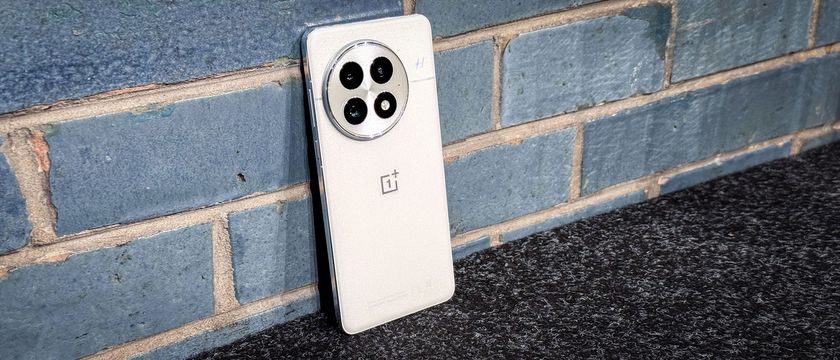
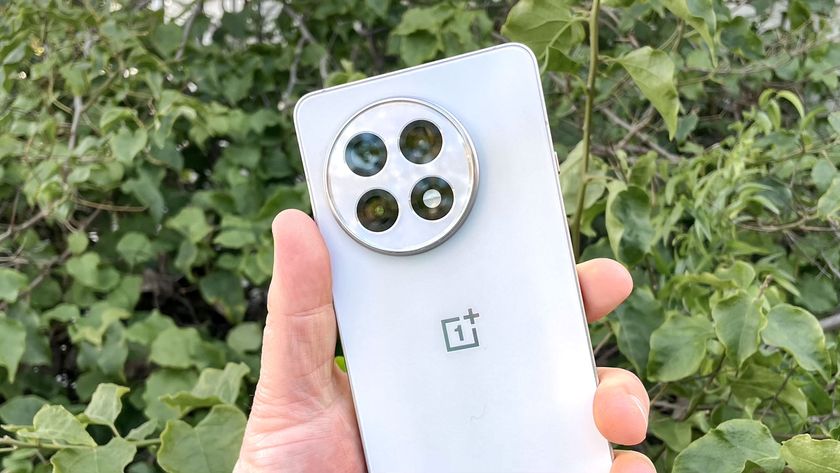
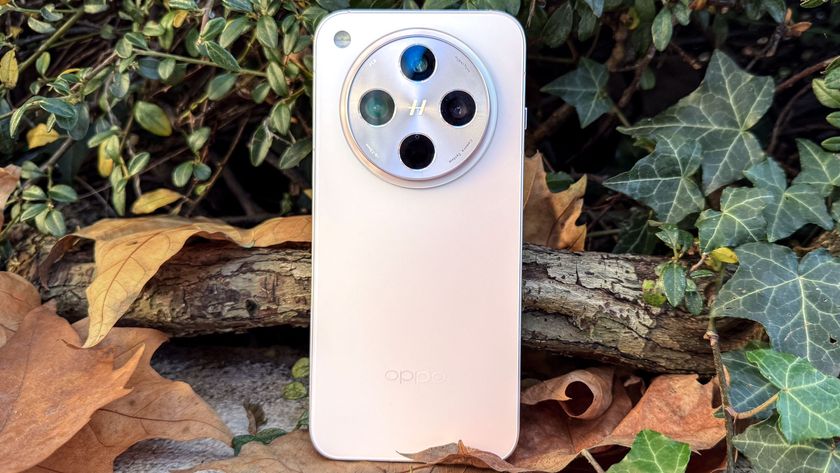
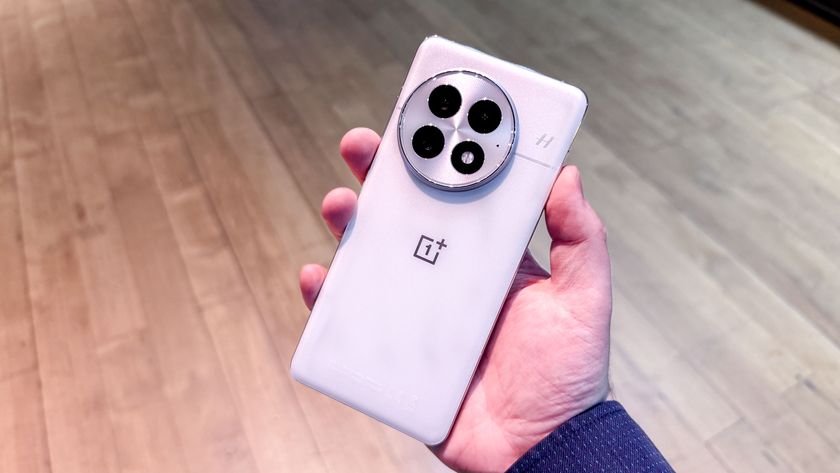
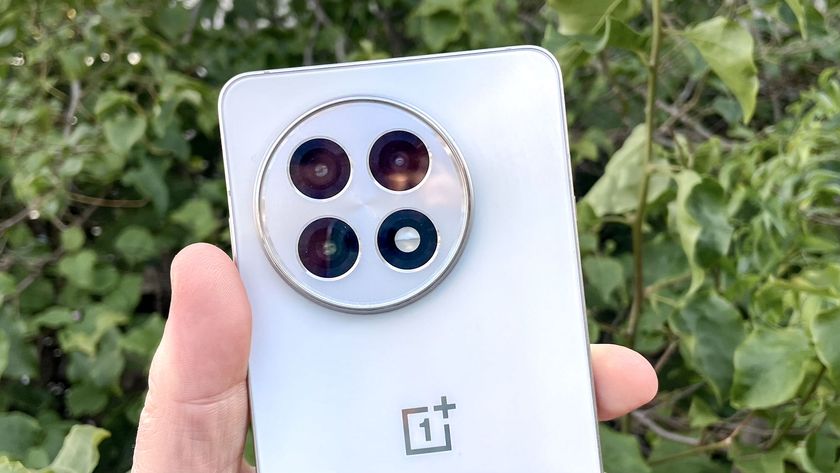
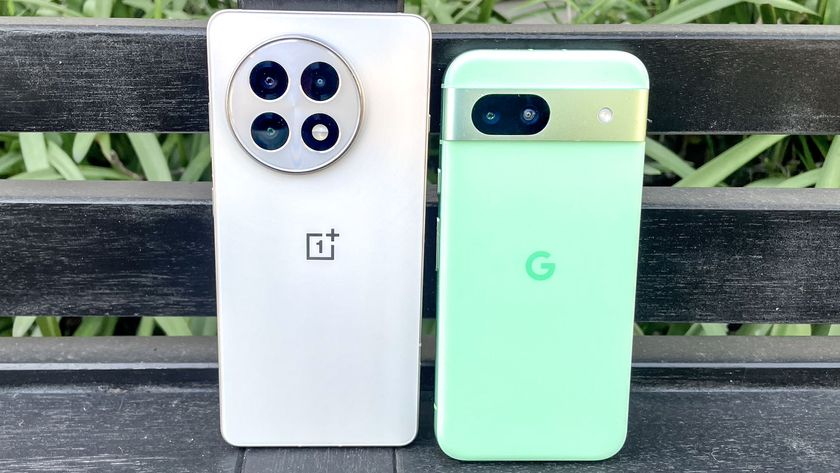
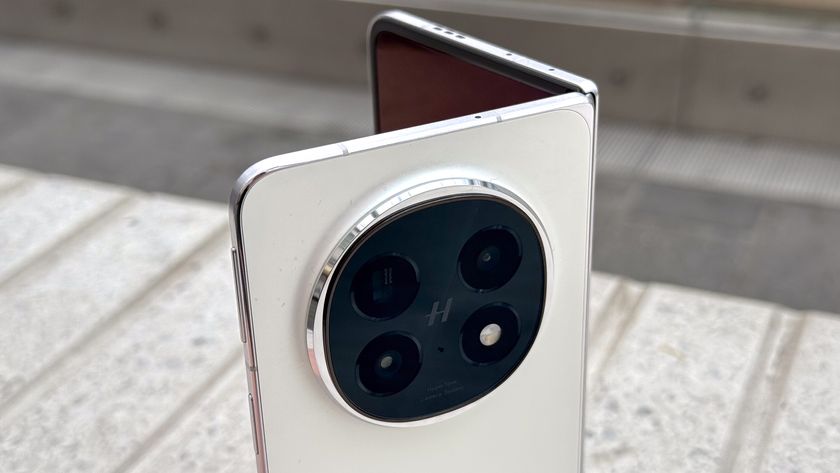
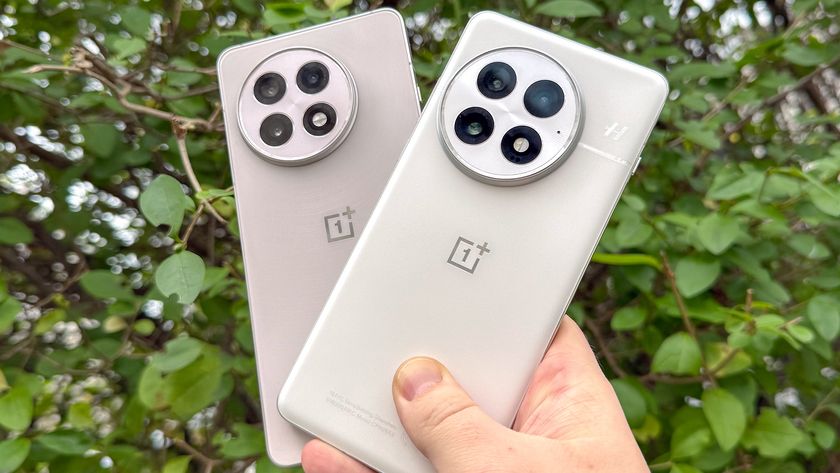
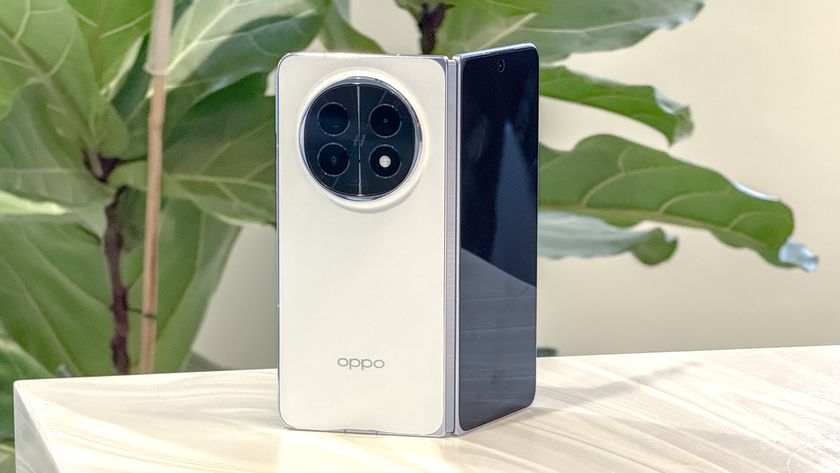

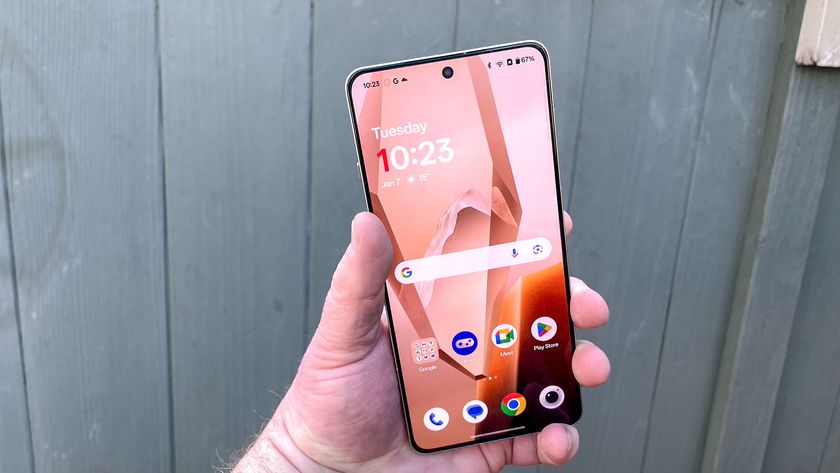
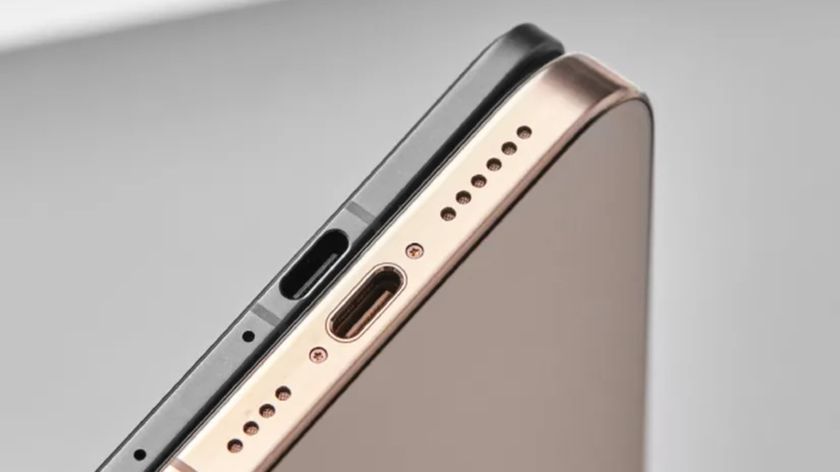
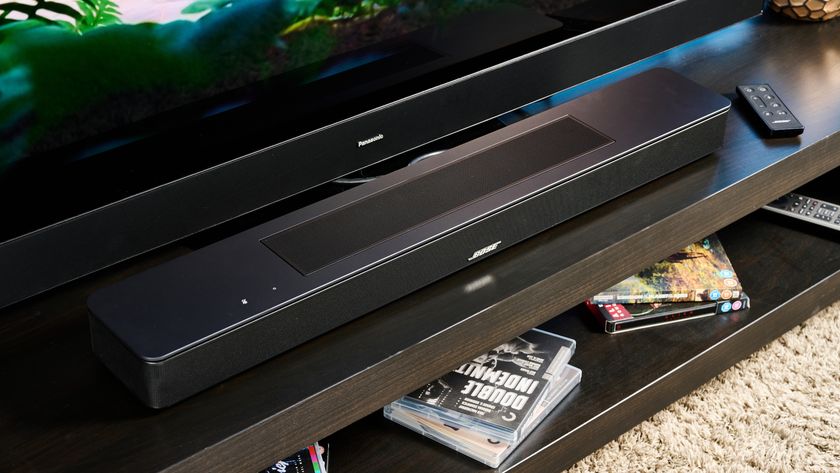
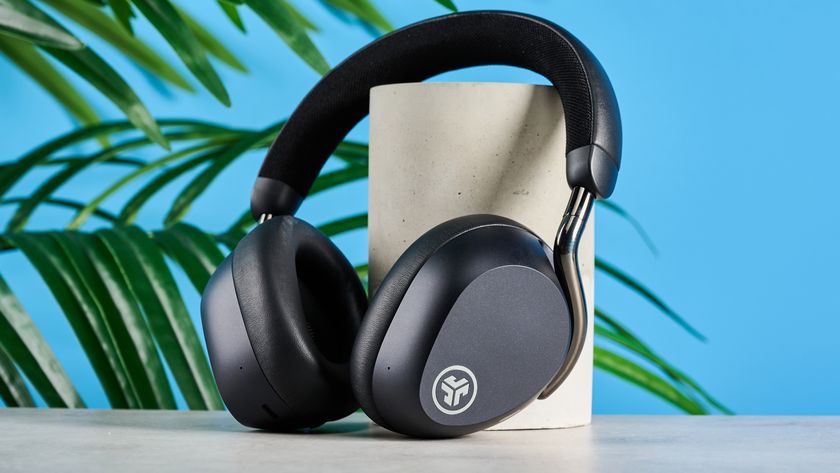
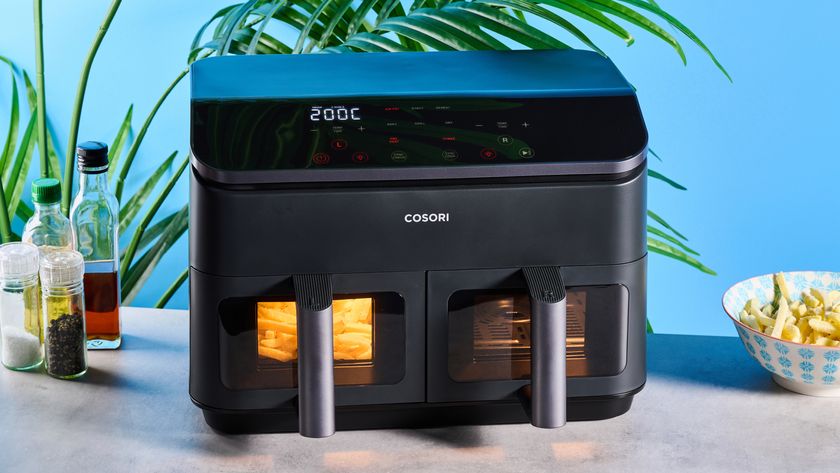
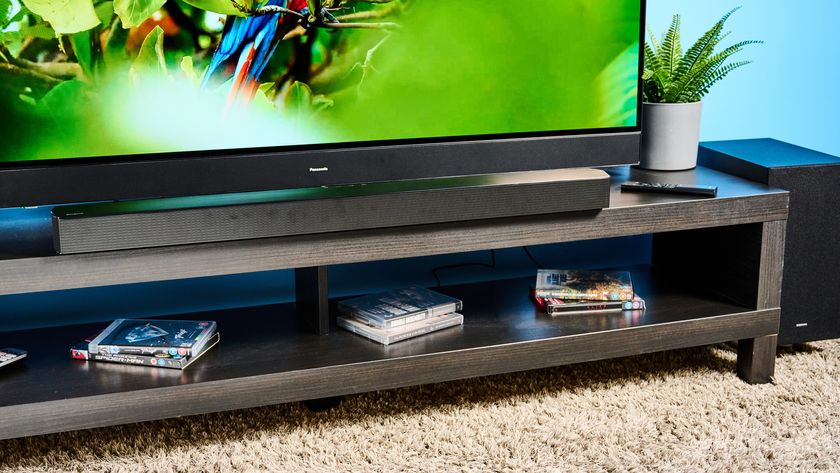
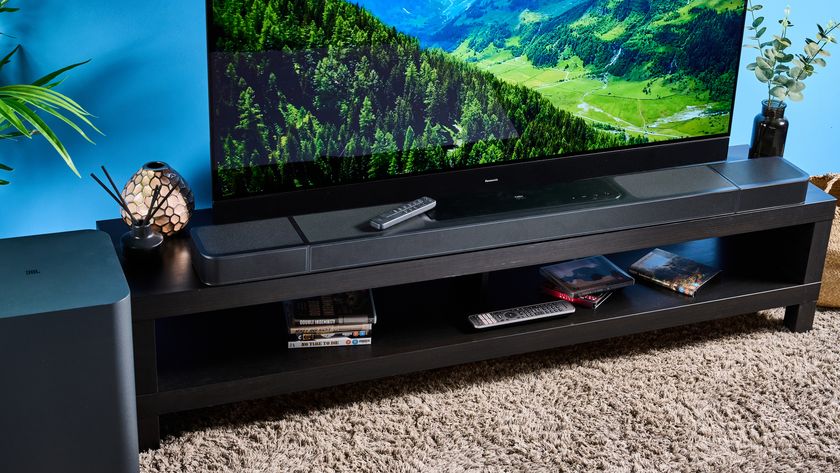
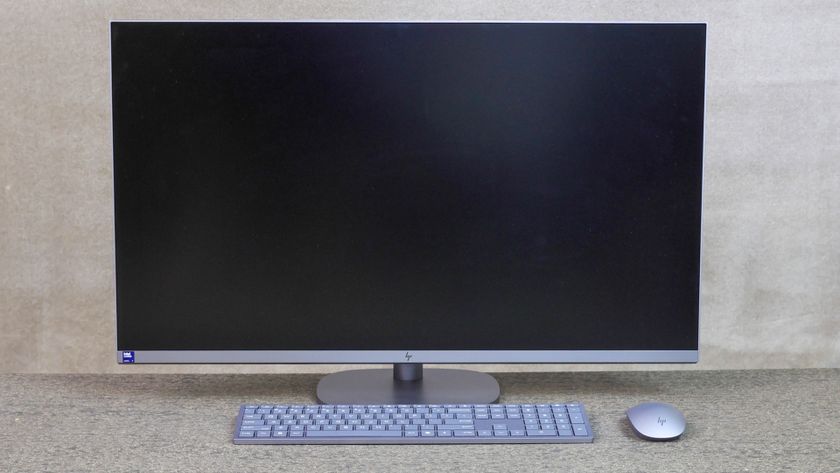
-
shawndugout13 So, no headphone jack, no expandable storage, no wireless charging, no water resistance(heck, why even make it out of glass), no iris scan option, no s-pen, good camera but still not better, good battery but still smaller, no dual speakers with Dolby atmos, no support, hairline difference in the synthetic geekbench score(if that even matters..??), smaller notch but still a notch, yea, I can see why it's cheaper. Note 9 OVERALL better. Heck, the Note 8 is in the same price ballpark, as well as you can find the S9 Plus which are also better overall devices that offer more..Reply -
isomer21 I got the OP6 because it may be the last good phone to have a headphone jack. Samsung's don't count because their software bloat is pure junk. While I do prefer having the FP sensor on the back, I'm now interested in what it would be like on the front based on the article's description. I've read elsewhere that it gets brighter when used which would be irritating at night.Reply
I'm still considering updating to the 6T but will wait a few months to get more reviews and probably a price drop. If the software tweaks on the 6T come to the 6, I may not need to upgrade until the 7T or maybe the 8. -
rbell96 Funny Comment Shawn. Owner's of the OP6T will enjoy updates for years and security updates for three. Meanwhile, folks with N9 will be stuck to wait for Samsung or their cellular carrier to get around to updating.Reply -
mason.nawar Worst phone ive ever owned. all those postive things put online is pure marketing. sent my phone in for a ton of problems and they tell me nothing is wrong with it never had suck a glitchy and terrible customer. Please save a 100 dollars more and buy a real phone i can type 6 pages of garbage on this phone but trust me when i say this NOT WORTH THE SAVINGReply -
ansley Above poster doesn't know what he's talking about, must be paid to post bad stuff. Everyone I know who has OP6 loves it! Bought one for my daughter, phone is flawless, runs everything perfectly and so smoothly. Has latest Anrdoid, it just plain works amazingly well. Face recognition is instant, the reviews are REAL. I will never waste over $600 on a phone, I build home Gaming PC for $600-1000, no mobile device really should be over $500...ever. However, the OnePlus is the one that is actually worth the money. I'm considering one for me, but I do want the headphone jack, but I can use a USB converter as my sons do to use their USB headsets. That's the beauty of Android, I can plug anything into USB and it works! Although, I haven't tried that with USB-C but assume it works just like micro USB.Reply -
mason.nawar I find it weird that you are defensive for their product like some is talking about a family member lol. its silly i see all those ppl saying oneplus is a good phone but have never had a problem and dealt with there customer care. it garage i have never been so mistreat by customer service and hell ya its not worth the saving to deal with all the fustration they put me through. i hope none of you have to go through what i went through anyways that my experience some ppl like to get their hand burnt before they see that the oven is hot. just my 2 cents take it or leave it am just trying to help.Reply -
guilleray @MASON.NAWARReply
Are you really sure all you think is pure truth ?
I do think exactly the opposite : I never before used such an amazing phone...
